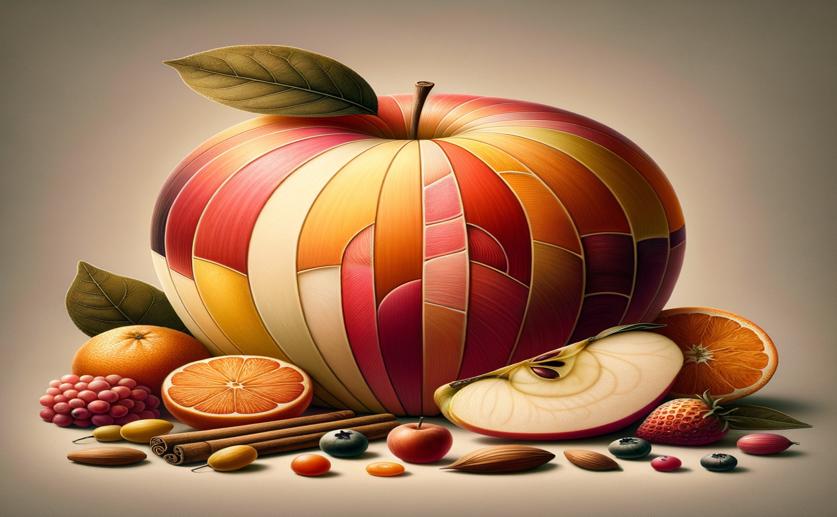
How Apple's Color and Nutrients Are Controlled by Gene Interactions
Jim Crocker
26th April, 2024

Image Source: Natural Science News, 2024
Key Findings
- Study at Qingdao Agricultural University found how proteins control apple color and nutrition
- Protein MdMYB44 regulates carotenoid production by interacting with genes MdCCD4 and MdCYP97A3
- This regulation involves a complex that represses gene activity, affecting apple pigment and health benefits
References
Main Study
1) The MdMYB44-MdTPR1 repressive complex inhibits MdCCD4 and MdCYP97A3 expression through histone deacetylation to regulate carotenoid biosynthesis in apple.
Published 25th April, 2024
https://doi.org/10.1111/tpj.16782
Related Studies
2) A kiwifruit (Actinidia deliciosa) R2R3-MYB transcription factor modulates chlorophyll and carotenoid accumulation.
3) Metabolic and gene expression analysis of apple (Malus x domestica) carotenogenesis.
4) Overexpression of PSY1 increases fruit skin and flesh carotenoid content and reveals associated transcription factors in apple (Malus × domestica).
5) Specific members of the TOPLESS family are susceptibility genes for Fusarium wilt in tomato and Arabidopsis.



 15th April, 2024 | Jenn Hoskins
15th April, 2024 | Jenn Hoskins